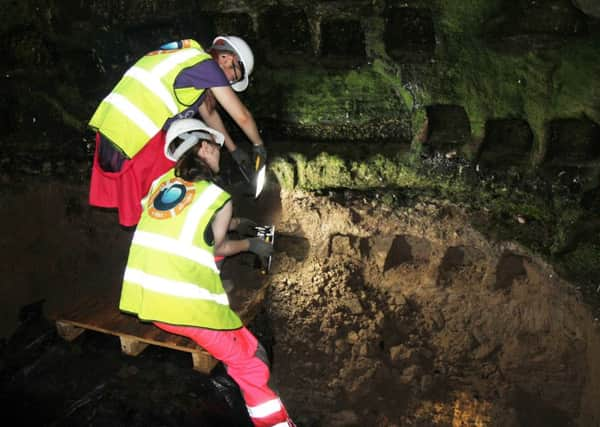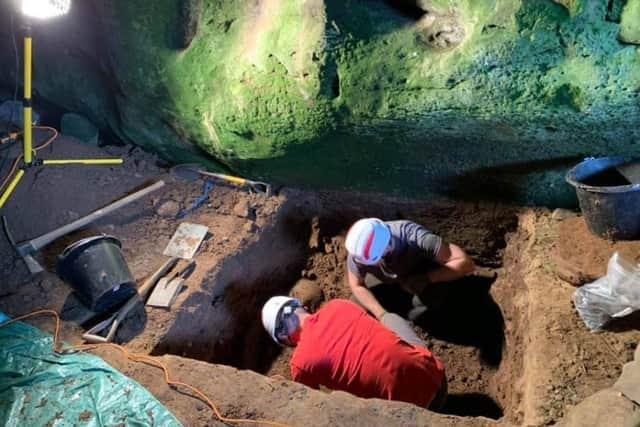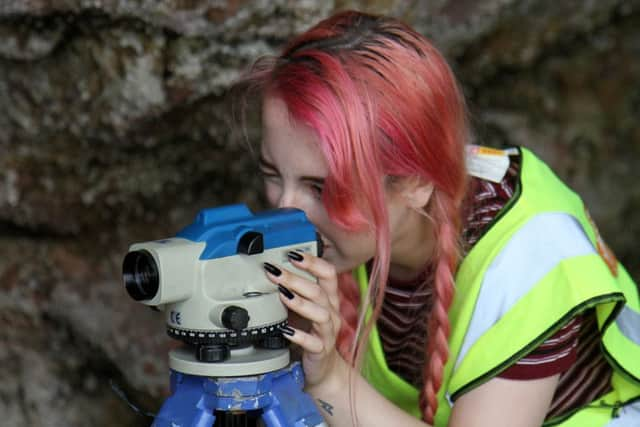Discovering the secrets hidden away in the Wemyss Caves


Medieval pottery and animal bone are just a couple of the findings unearthed during the dig, which has taken place over the last week.
These been the first excavations to take place since Channel 4’s Time Team investigations in 2004.
Advertisement
Hide AdAdvertisement
Hide AdThe dig is part of a wider programme of events organised by the Save the Wemyss Ancient Caves Society (SWACS), with the SCAPE Trust, University of St Andrews, co-ordinating the archaeological work, which has been joined by Northern Picts Project archaeologists from the University of Aberdeen.


The caves are most famous for their Pictish carvings, of which about 50 survive.
One of the main aims of the dig was to more accurately date when these were made but it has also revealed evidence of how the caves were used.
You may also be interested in:


Advertisement
Hide AdAdvertisement
Hide AdJoanna Hambly, archaeologist from the SCAPE Trust, revealed the discoveries made inside the Court Cave: “Just below the modern ground surface we have found a layer of trampled coal dust.
“We think this may have been walked in on the bottom of miners’ boots when they used the Court Cave for a popular coin-tossing gambling game.
“In the trench outside Court Cave, volunteers have made a tantalising discovery of medieval pottery and animal bone buried beneath over a metre of soil that has accumulated in front of the sandstone face of the cliff.
“The animal bone includes cow and deer bones which show signs of having been cut and split so are almost certainly food remains. This shows just how rich in history the area around the Wemyss Caves is.”
Advertisement
Hide AdAdvertisement
Hide AdMeanwhile Tom Dawson, also an archaeologist from SCAPE, two students and members of SWACS are excavating in the Doo Cave, where they have dug through a thick layer of in-wash at the back of the cave.
This has revealed two further rows of niches thought to be nesting boxes for pigeons carved into the cave wall.
In the Sliding Cave, a team led by Gordon Noble from Aberdeen University and assisted by SWACS members has successfully re-discovered archaeological deposits possibly dating from the third to fifth centuries AD, which were first recorded in the Time Team excavations.
It is hoped that further analysis will reveal more information about the origin of the Pictish symbols.
Advertisement
Hide AdAdvertisement
Hide AdFinally, volunteers from SWACS have been digging a series of test pits on the promontory adjacent to Macduff Castle to investigate whether it was occupied or used as a fort in the Pictish period.
Mike Arrowsmith, chairman of SWACS, said “The incredible number of volunteers and visitors shows how much the caves are valued and what important history they contain.
“But there’s still so much we don’t know about the caves, so hopefully when all the results from the excavations are back we’ll be a little bit further towards understanding how people used them throughout history and when the features date from.”